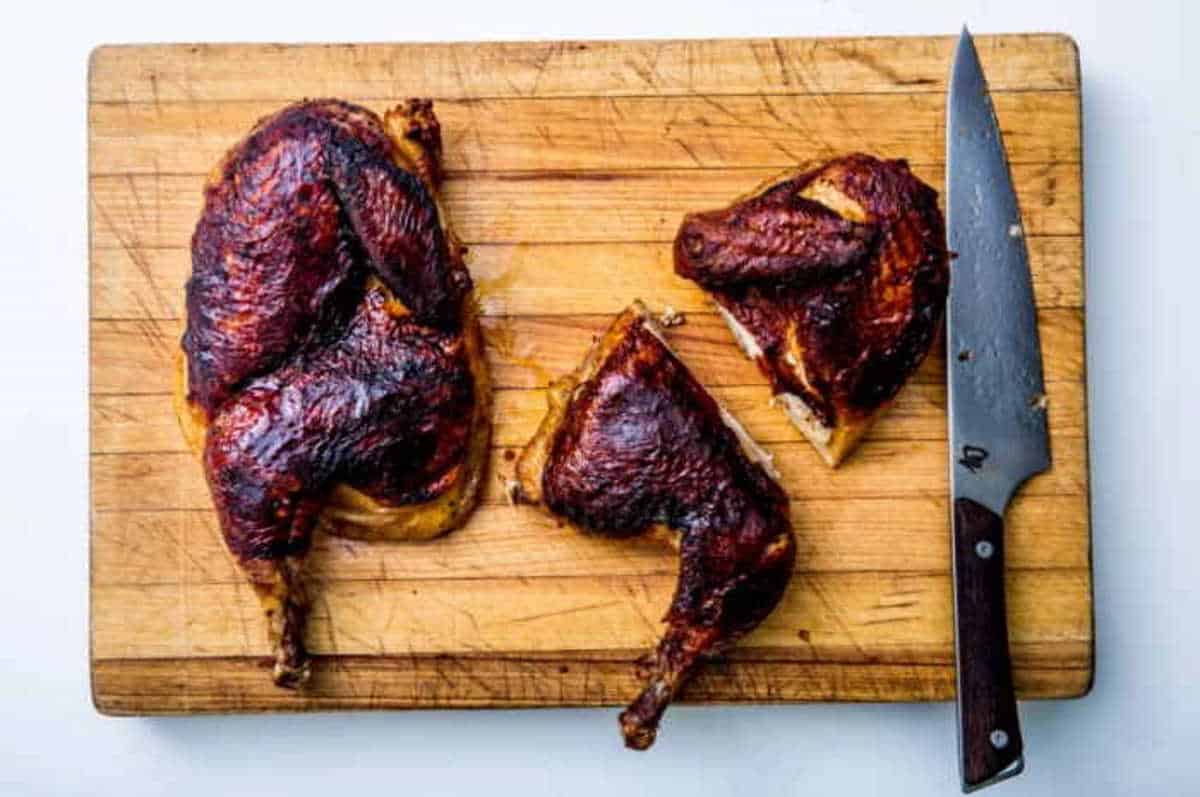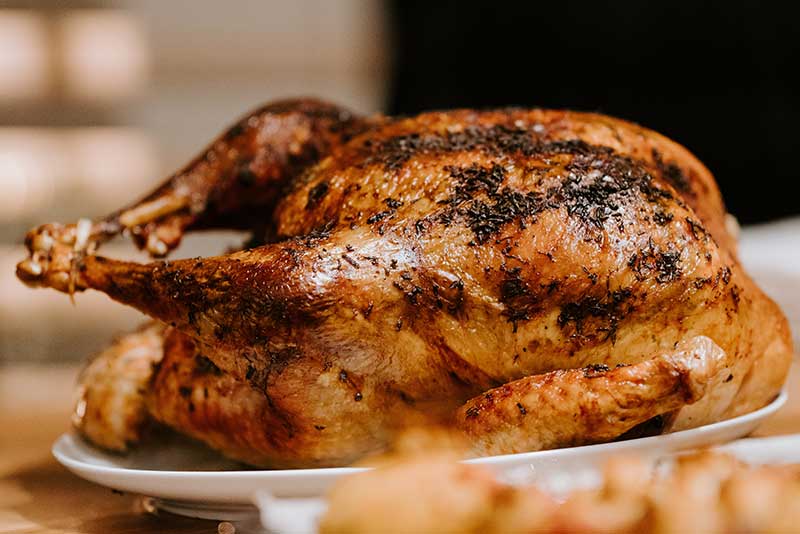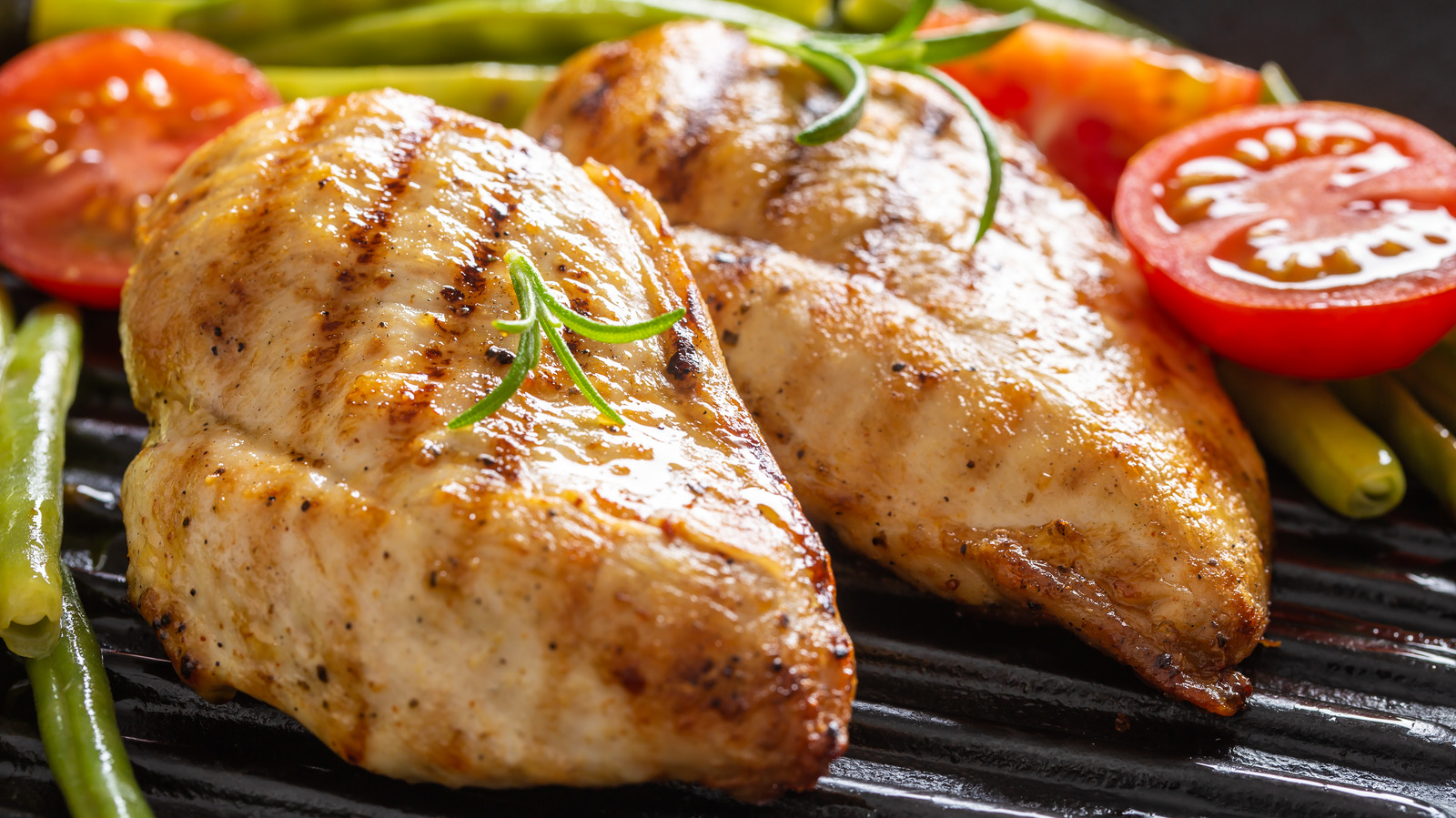Part 1: Understanding Thin Chicken Cooking to Avoid Overcooking
Cooking chicken, especially thin chicken breasts, can be a tricky affair. The challenge lies in ensuring that the chicken is cooked just right – not too raw and definitely not overcooked. Overcooking chicken can lead to a dry and tough meal, which is not appetizing. This article aims to provide comprehensive guidance on how to avoid overcooking thin chicken.
The Science Behind Perfectly Cooked Thin Chicken
When it comes to cooking chicken, understanding the science behind it can be quite beneficial. As heat is applied to the chicken, the proteins within the meat start to denature, causing the meat to firm up. However, if the heat is too high or the cooking time too long, the proteins squeeze out the moisture, leading to dry, overcooked chicken.
The key to perfectly cooked chicken lies in the internal temperature. Chicken is considered safe to eat when its internal temperature reaches 165°F. However, it’s important to note that the chicken’s temperature will continue to rise slightly after being removed from the heat. Therefore, it’s recommended to remove the chicken from the heat when it reaches an internal temperature of around 160°F and let it rest. This process is well explained in The Food Lab by Lopez-Alt.
Common Mistakes When Cooking Thin Chicken
There are several common mistakes that people make when cooking thin chicken. You can learn more about these common mistakes to avoid when cooking chicken from our external resource.
Avoid Overcooking: The Importance of Even Cooking
When cooking thin chicken breasts, achieving an even thickness is crucial. This is because uneven pieces of chicken will cook at different rates, leading to some parts being overcooked while others might be undercooked. For more practical examples of how to avoid overcooking chicken in the oven, check out our article on oven-baking chicken without overcooking.
Part 2: Techniques to Prevent Overcooking Thin Chicken
Stovetop Cooking Method for Juicy Thin Chicken
Cooking chicken on the stovetop is a common method. Here’s a step-by-step process:
- Heat a pan over medium heat and add a bit of oil.
- Season the chicken as desired and add it to the pan.
- Cook the chicken for about 4-5 minutes on each side, or until the internal temperature reaches 160°F.
- Remove the chicken from the pan and let it rest for a few minutes before serving.
To avoid overcooking, it’s important to control the heat and not rush the cooking process. For more guidance on cooking lean cuts of chicken, you can refer to our external resource.
Oven Cooking Method: Avoid Dry Thin Chicken
Cooking chicken in the oven can result in a moist and flavorful dish. Here’s how to do it:
- Preheat the oven to 375°F.
- Season the chicken as desired and place it on a baking sheet.
- Bake the chicken for about 20-25 minutes, or until the internal temperature reaches 160°F.
- Remove the chicken from the oven and let it rest for a few minutes before serving.
To avoid overcooking, it’s recommended to use a meat thermometer to check the internal temperature. Also, covering the chicken with foil can help keep it moist. More tips on oven cooking can be found on naanonbroughton.com.
Slow Cooker Method: Master Thin Chicken Cooking
A slow cooker can be a great tool for cooking chicken, as it allows for a low and slow cooking process. Here’s a step-by-step guide:
- Place the chicken in the slow cooker and add your choice of liquid (such as chicken broth or water).
- Cover and cook on low for about 2-3 hours, or until the internal temperature reaches 160°F.
- Remove the chicken from the slow cooker and let it rest for a few minutes before serving.
Remember, cooking on low heat is crucial to avoid overcooking and drying out the chicken. For a flavorful recipe that uses thin chicken cuts, you can refer to our article on Cilantro Lime Chicken Thighs.
Instant Pot Method: Perfectly Cook Thin Chicken
The Instant Pot is a versatile kitchen gadget that can make cooking chicken a breeze. Here’s how:
- Add a cup of water to the Instant Pot and place the trivet inside.
- Season the chicken as desired and place it on the trivet.
- Close the lid and set the Instant Pot to pressure cook on high for 10 minutes.
- Once the cooking time is up, let the pressure release naturally for 5 minutes, then do a quick release.
- Check the internal temperature to ensure it’s 160°F, then remove the chicken and let it rest for a few minutes before serving.
The Instant Pot can cook chicken quickly and efficiently, but it’s still important to check the internal temperature to avoid overcooking. You can find more tips on Instant Pot cooking at The Recipe Rebel.



FAQs on How to Avoid Overcooking a Thin Chicken Breast
The key is to cook on medium heat, check the internal temperature, and let the chicken rest after cooking. You can find additional tips on avoiding overcooked chicken in our external resource.
Should I cover chicken breast with foil when baking?
Yes, covering the chicken with foil can help keep it moist. For more practical examples of how to avoid overcooking chicken in the oven, check out our article on oven-baking chicken without overcooking.
How do you keep chicken moist in the oven?
Besides covering with foil, basting the chicken with its juices or a marinade can help keep it moist. For more guidance on cooking lean cuts of chicken, you can refer to our external resource.
Additional Cooking Tips and Techniques for Thin Chicken
Marinating the Chicken
Marinating the chicken before cooking can not only add flavor but also help keep the chicken moist. The marinade can be as simple as olive oil, lemon juice, and your choice of herbs and spices. For best results, marinate the chicken for at least 30 minutes before cooking. However, be careful not to marinate in acidic ingredients for too long as it can start to cook the chicken and make it tough. For more information, check out our section on Marinating the Chicken.
Using a Brine
Another technique to ensure moist chicken is to use a brine. A brine is a solution of salt and water, and often includes other flavorings like sugar, herbs, and spices. The chicken is soaked in the brine for several hours, which helps to tenderize the meat and lock in moisture. This is particularly useful for lean cuts of meat like chicken breasts. For more details, see our section on Using a Brine.
Cooking with Fat
Adding a little fat can also help prevent the chicken from drying out. This could be in the form of cooking oil, butter, or even a slice of bacon wrapped around the chicken breast. The fat will help to keep the chicken moist and also add flavor. For more tips, see our section on Cooking with Fat.
Resting the Chicken
As mentioned earlier, resting the chicken after cooking is crucial. This allows the juices to redistribute throughout the chicken, resulting in a moister and more flavorful chicken. It’s recommended to let the chicken rest for at least 5-10 minutes after cooking. For more information, check out our section on Resting the Chicken.
Advanced Techniques to Master Thin Chicken Cooking
For those who want to take their chicken cooking skills to the next level, there are a few advanced techniques that can help ensure perfectly cooked chicken every time.
Sous Vide Cooking
Sous vide is a cooking method that involves sealing the food in a plastic bag and cooking it in a water bath at a precise temperature. This allows the chicken to cook evenly and retain its moisture, resulting in perfectly cooked, juicy chicken. However, this method requires special equipment and more time than traditional cooking methods. For more details, see our section on Sous Vide Cooking.
Reverse Searing
Reverse searing is a technique where the chicken is first cooked at a low temperature until it’s almost done, then finished off at a high temperature to create a golden, crispy exterior. This method is great for cooking chicken evenly without drying it out. For more information, check out our section on Reverse Searing.
Using a Cast Iron Skillet
A cast iron skillet is a versatile tool that can help achieve a nice sear on the chicken while also allowing it to cook evenly. The trick is to heat the skillet over medium heat, add the chicken, then transfer the skillet to a preheated oven to finish cooking. For more tips, see our section on Using a Cast Iron Skillet.
Conclusion: Your Guide to Avoid Overcooking Thin Chicken
Cooking thin chicken without overcooking it can seem like a daunting task, but with the right knowledge and techniques, it’s definitely achievable. Whether you’re a novice cook or a seasoned chef, these tips and techniques can help you cook perfectly moist and flavorful chicken every time. So, don’t be afraid to experiment and find what works best for you. Happy cooking!
For more tips and techniques, check out our articles on Marinating Chicken, Using a Brine, Cooking with Fat, and Resting the Chicken. For advanced techniques, see our sections on Sous Vide Cooking, Reverse Searing, and Using a Cast Iron Skillet.
